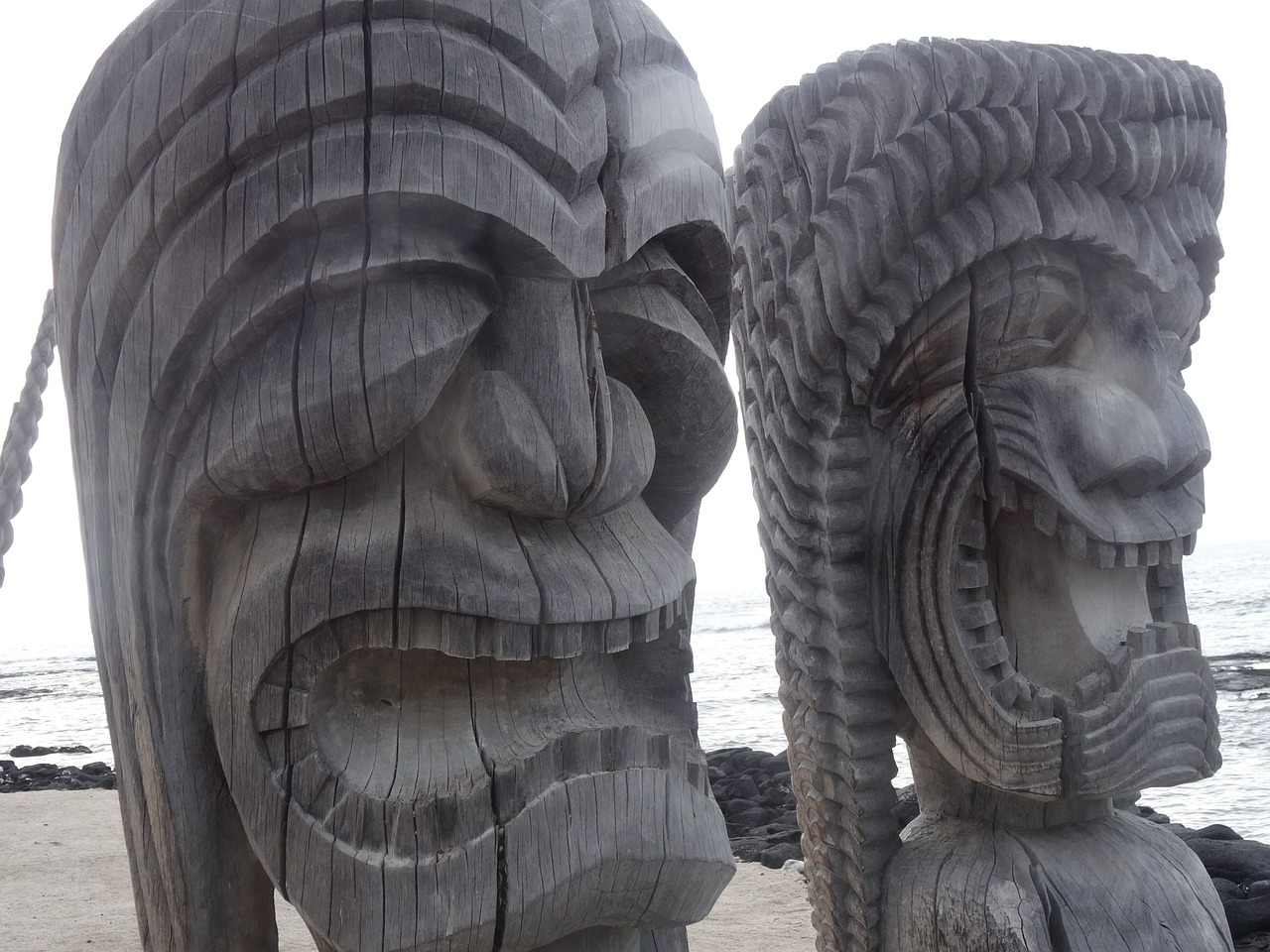One of the things that give Hawaii its enormously rich cultural heritage is its sprawling mythology. It is a mythology as full of love and lust, of conquest and loss, of heroism and betrayal, as any of the classical Greek or Roman myths that most literate people in the western world are familiar with. Each of Hawaii’s islands has its own myths and legends, and they all blend into one another to create an intricate narrative tapestry. These myths and legends are often tied to specific locations throughout the islands.
Mokoli‘i, Kane‘ohe Bay O‘ahu
Known famously (and perhaps politically-incorrectly) as “Chinaman’s Hat”, Mokoli‘i sits at the northern end of Kaneohe Bay on Oahu. Shaped like the conical hat worn by people throughout Asia, it’s easy to see how it got its popular name. The myth behind Mokoli’i’s Hawaiian name is certainly more interesting than that.
Mokoli‘i means “little lizard” in English. The legend holds that Hi‘iaka, a sister of the goddess Pele, was making her way through the area one day when she was attacked by a giant lizard. Hi‘iaka was victorious in the fight, and Mokoli‘i is said to be the tip of the tail of the vanquished lizard. When looking at the peaks of the mountains of Kualoa just above Mokoli‘i, you can make out the outline of the lizard’s back (Kualoa means “long back”). Cool!
Kamapua‘a and Pele, Hawaii Island
Legends about both Kamapua‘a and Pele, the fire goddess said to live at the Kilauea volcano, are abundant throughout the islands. Part of that legend explains why the east side of the Big Island is lavishly lush and bountiful while the west side is stark, barren, and foreboding.
A handsome demigod himself, Kamapua‘a arrived on the Big Island and heard of Pele‘s beauty and fiery temperament. His overture was rebuffed by Pele, and Kamapua‘a planned an attack on her territory. Pele eventually yielded to Kamapua‘a, only to once again deny him her affecttions. To ease his pain, Pele gave Kamapua‘a the verdant mountains and valleys of Kohala, Hamakua, and Hilo, keeping Ka‘u and Kona for herself. That explains it!
Pu‘u Keka‘a, Ka‘anapali Maui
Located at the northern end of Ka‘anapali Beach, Pu‘u Keka‘a has become a popular snorkeling and diving spot for residents and tourists alike. It’s a large, lava rock outcropping that juts into the ocean. Legend holds that this was a point from which departed souls would leap into the afterlife. The great chief Kahekili was believed to be the only one who could jump from the rock without perishing (tell that to the kids that routinely make the leap!). There is also a resort-sponsored sunset torch lighting ceremony each night there, concluded with a diver making the leap to symbolize the legend.
Alekoko Fish Pond, Kauai
Located near Nawilili Harbor in Lihue, along the Hule‘ia River, Alekoko fishpond is also known as “Menehune Fish Pond.” This is because of the legend behind it. Some researchers have dated the pond back up to 1000 years. It is a manmade structure, but legend has it that an ancient chief asked Kauai‘i’s menehune (think Hawaiian leprechauns) to build the pond. The menehune agreed on the condition that no one watch them work, as they hand-carried stones, firefighter-line style, from a quarry 25 miles away. When the hard work was done, the menehune washed their bloodied hands in the water. Alekoko means “bloody ripples.” There are many fish ponds, or kuapa, throughout the islands with similar legends involving the menehune.




